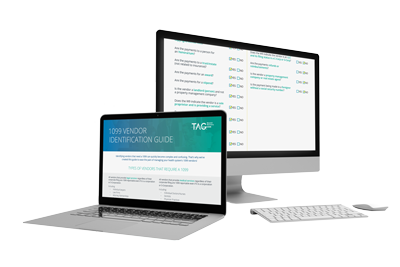
Top 8 AP KPIs for your Health System
July 27, 2021
Takeaways from the AHRMM 2021 Conference
August 27, 20212020 not only brought on a seemingly never-ending pandemic, but it also brought back the 1099-NEC form complicating filings for health system’s accounts payable (AP) departments.
Health systems commonly have 5,000+ unique 1099 vendors on an annual basis that will be paid multiple times throughout the year. Small oversights in your 1099 vendor management process can quickly lead to headaches, extra manual work, and large fines from the IRS.
What is a 1099 Vendor?
A 1099 vendor is a business or an individual that has done work for your health system, has been paid in excess of $600, and does not have a corporate filing status. However, there are a number of exceptions such as:
- Lawyers (individual or firms)
- Partnerships
- Medical Providers
- For-Profit Medical Institutes
- LLC’s where the tax classification is sole proprietor/individual, partnership, or disregarded entity
Additionally, some other easily overlooked vendor payments that need to be reported as 1099 payments are:
- Payments to landlords for rent (not a property management company)
- Stipends
- Royalties (once $10 is exceeded)
- Honorariums
- Prizes

Take the pain out of identifying your 1099 vendors with our free vendor identification guide and cheat sheet.
Download now!1099 Vendor Setup
Health systems can take one of two approaches to manage their 1099 vendors:
- Setting up vendors in the system as 1099 vendors before transactions occur and filtering out non-1099 transactions.
- Filing 1099 forms per transaction.
While both approaches to managing vendors work, managing at the transaction level first requires more manual review and work. TAG recommends setting vendors up in the ERP system at the vendor level and reviewing transactions. This limits the chance of missing 1099 transactions to avoid penalties from the IRS.
The most efficient method of doing this is to set up each vendor’s 1099 status when their W9 is collected and input into the health system’s ERP system. Doing this will save time if a correction is needed in the future. For example, if a vendor is not properly classified when reviewing at the end of the year, a correction is needed in the system at the vendor level. The correction would also require manual adjustments at the invoice level, for every relevant invoice, to ensure all payments have been coded properly. This may become very time-consuming at a time when AP is already stretched thin while preparing for year-end.
In order to minimize your health system’s risk of IRS penalties and reduce the resource strain on your personnel, all vendors should be set up by the same team - residing in AP or Supply Chain. No vendors should be created without a W9 and all W9’s should be attached to the vendor profile, check request back up, or in a repository that can be easily accessed by the team. Vendor payments and all vendors that have been added should be audited on a quarterly basis to monitor for any errors rather than wait until the end of the year for review.
1099 Filing Fines
Penalties are often administered for either not reporting a 1099 vendor or incorrectly reporting a 1099 vendor (such as the vendor’s name and TIN not matching the information on file with the IRS).
As of 2020, the IRS placed the following fine structure in action:
- $50 if you file within 30 days of the due date; maximum penalty of $197,500
- $110 if you file more than 30 days after the due date but by August 1; maximum penalty of $565,000
- $280 if you file after August 1; maximum penalty of $1,130,500
- $460 for intentional disregard with no maximum penalty
Does your health system potentially have a 1099 problem?
TAG can help and reduce your risk with our latest 1099 vendor identification indicator tool or download our 1099 cheatsheet. Message us now.



